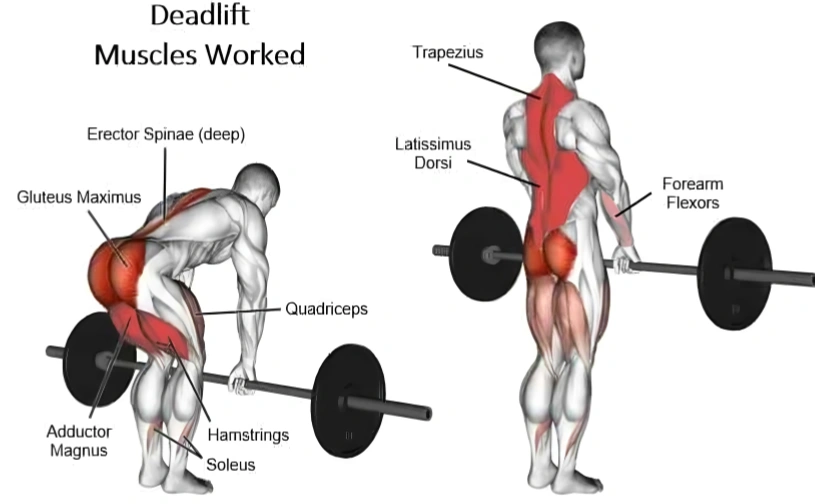Alternatives to deadlifts are something a lot of people end up searching for—even if they don’t say it out loud.
Deadlifts are great, yeah. Classic move. Hits everything. But let’s be real for a sec: not everyone’s body loves them. Your back gets tight. Your form feels off. And sometimes, just setting it up takes more energy than the lift itself.
So, what then? Do you skip it? Nah. You just need the right alternative to deadlifts—movements that train the same muscles, build real strength, and feel way better on your body.
Here are 10 deadlift alternatives that actually work—and don’t wreck you in the process.
Trap Bar Deadlift
Trap bar deadlifts are as close as it gets to the real thing—just without the back strain or setup headaches.
They’re a go-to for beginners, taller lifters, or honestly anyone who wants to pull heavy without overcomplicating it.
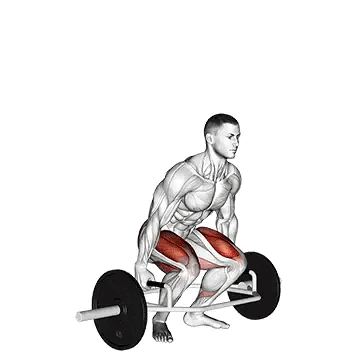
What it hits
- Glutes, hamstrings, quads
- Core and upper back for support
- Less stress on your lower spine
Setup & form
- Step into the trap bar, feet shoulder-width
- Grab the handles, brace your core, chest up
- Push through your feet and stand tall
- Lower with control—don’t drop it
Why it works
- Higher handles make it easier to lift
- Keeps you centered—safer for your back
- Feels natural, even for beginners
- Great for strength with less injury risk
Romanian Deadlift (RDL)
It’s a hip-hinge from a standing start. You lower the weight with control, but it never hits the floor. Hamstrings and glutes do all the work.
Best for: people who want stronger legs without pulling from the floor.

What it hits
- Hamstrings and glutes
- Core and lower back (light support)
- Great for building posterior chain strength
Step-by-step
- Hold a bar or dumbbells at your thighs
- Knees slightly bent, back flat
- Push hips back, lower the weight slow
- Squeeze glutes to come back up
Why it works
- No need to pull off the ground
- Excellent for muscle activation
- Safer for the spine
- Builds strong, injury-resistant hamstrings
Barbell Hip Thrust
You lift your hips with a barbell on your lap, back against a bench. It looks awkward, but your glutes won’t care.
Best for: people chasing glute growth without beating up their lower back.
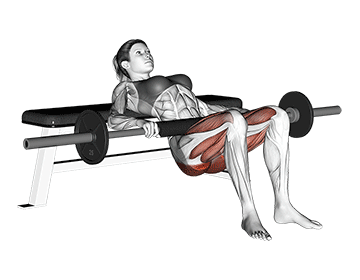
What it hits
- Glutes, glutes, and more glutes
- Some hamstrings and quads
- Builds hip drive and strength
How it’s done
- Sit on the floor, back on bench
- Roll barbell onto your hips (pad it!)
- Drive through heels to lift hips
- Pause at top, lower slow
Why it works
- Top-tier glute builder
- Low spinal load
- Easy to learn and load heavy
- Works great in home or gym settings
Kettlebell Swings
This explosive move trains power and cardio all at once. You swing the bell with hip force, not arms.
Best for: lifters wanting full-body action without heavy weight.
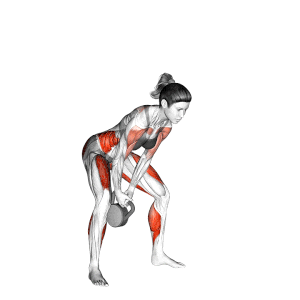
What it hits
- Glutes, hamstrings, hips
- Core and grip
- Adds speed and athleticism
How to perform
- Stand wide, kettlebell in hands
- Hinge back and swing bell through legs
- Snap hips forward to swing up
- Let it float—don’t muscle it
Why it works
- Builds strength + conditioning together
- Low equipment needed
- Hits muscles and heart rate
- Safer than high-rep deadlifts
Cable Pull-Through
This one looks funny—but it seriously targets your glutes and hamstrings using a cable machine.
Best for: focused glute/ham training with less spinal load.
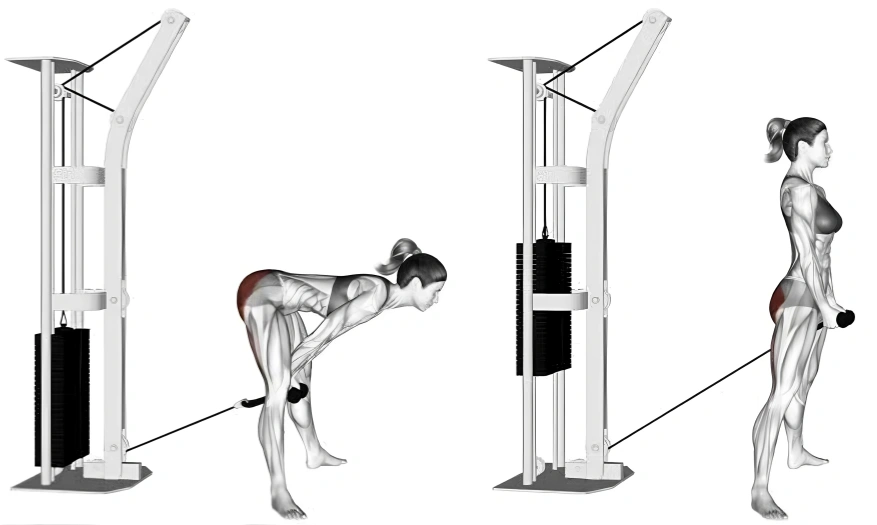
What it hits
- Glutes and hamstrings
- Core and hips
- Posterior chain without compression
Quick breakdown
- Face away from cable, rope between legs
- Hinge at hips, let rope pull back
- Drive hips forward and squeeze glutes
- Keep arms loose, hips in control
Why it works
- Controlled, safe hip hinge pattern
- Easy on the back
- Perfect for high reps or finishers
- Great for isolation in glute programs
Good Morning
A hinge movement with a bar on your upper back—not for beginners, but excellent for posterior chain work.
Best for: experienced lifters needing hamstring and back strength.
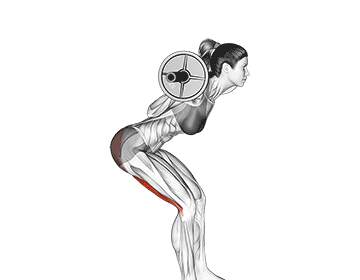
What it hits
- Hamstrings, glutes, and lower back
- Builds strong hip hinge mechanics
- Great carryover to squats and pulls
Technique guide
- Bar on traps, stand tall
- Slight bend in knees
- Push hips back, torso leans forward
- Stop before losing back tension, return
Why it works
- Trains strength and control
- Reinforces tight hinge mechanics
- Not much weight needed to feel it
- Excellent strength builder for advanced lifters
Dumbbell Deadlift
Same idea as barbell deadlift, but you use dumbbells. Way more accessible and easier to control.
Best for: beginners or home lifters with limited gear.
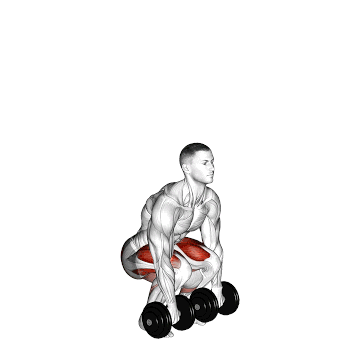
What it hits
- Glutes, hamstrings, quads
- Core and grip
- Total-body strength with flexibility
How it’s done
- Hold dumbbells at your sides
- Hinge at the hips, lower dumbbells
- Keep back flat, knees soft
- Stand tall, squeeze glutes
Why it works
- Easy to learn and adjust
- Safer than barbell deadlift for most people
- Great for home or travel workouts
- Builds strength with less joint stress
Single-Leg Romanian Deadlift
One leg, one weight, full-body focus. You’ll hit your glutes, hamstrings, and balance in one smooth (and surprisingly tough) move.
Perfect for anyone dealing with imbalances or looking to train smarter, not just heavier.
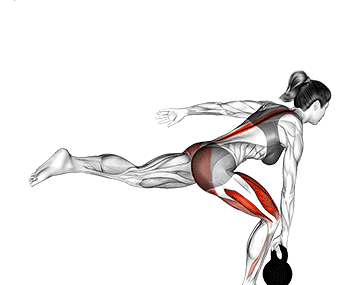
What it hits
- Hamstrings and glutes (one leg at a time)
- Core and balance muscles
- Unilateral strength and control
Technique guide
- Hold weight in one hand
- Slight bend in knee, hinge at hips
- Back leg lifts as you lower weight
- Return slow and controlled
Why it works
- Hits glutes/hamstrings deeply
- Improves balance and stability
- Fixes side-to-side muscle gaps
- Low back-friendly and joint-safe
Bent-Over Row
Not a deadlift copy—but rows still work your posterior chain, especially your back and hamstrings.
Best for: lifters who want pulling strength without doing full deadlifts.
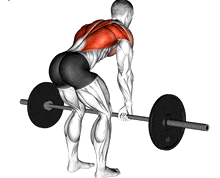
What it hits
- Lats, traps, rhomboids
- Hamstrings and glutes (isometric)
- Posture and pulling power
Setup & form
- Hinge at hips, back flat
- Hold barbell or dumbbells
- Pull toward your lower ribs
- Squeeze, then lower slow
Why it works
- Strong pull without full-body strain
- Builds upper back and grip
- Trains hinge position under tension
- Helps posture and deadlift lockout
Glute Bridge
Bodyweight or a dumbbell. That’s all you need. And trust me—your glutes will definitely feel it.
It’s a go-to for beginners, quick home sessions, or those “I’ve got 10 minutes, let’s go” kind of days.
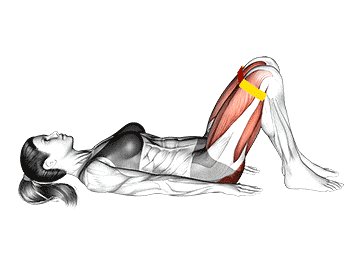
What it hits
- Glutes and hamstrings
- Some lower back and core
- Posterior chain without equipment
Do it like this
- Lie on your back, feet flat
- Push through heels and lift hips
- Squeeze at the top
- Lower slowly, repeat
Why it works
- Super safe for all levels
- Easy to do anywhere
- Activates glutes without stress
- Perfect warm-up or burnout finisher
How to Use These Alternatives to Deadlifts
So—you’ve got these alternatives to deadlifts. Now how do you use them? Simple.
Pick the ones that match your goal, plug them into your week, and follow some basic strength training rules.
| Goal | Best Exercises |
|---|---|
| Build muscle | RDL, Hip Thrust, Dumbbell Deadlift |
| Build strength | Trap Bar Deadlift, Good Morning |
| Protect your back | Glute Bridge, Cable Pull-Through |
| Burn fat / cardio | Kettlebell Swings, Bent-Over Row |
| Fix imbalances | Single-Leg RDL, Glute Bridge |
| For beginners | Glute Bridge, Hip Thrust, Dumbbell Deadlift |
👉 Pick 2–3 moves that fit your goal. You don’t need all 10.
Quick Weekly Plan Example
| Level | Workout 1 | Workout 2 |
|---|---|---|
| Beginner | Glute Bridge + Dumbbell Deadlift | Kettlebell Swings + Cable Pull-Through |
| Intermediate | Trap Bar Deadlift + Hip Thrust | RDL + Bent-Over Row |
👉 2 workouts per week is plenty. 3–4 sets each move. Keep it consistent.
✅ Sets, Reps & Progress
- Muscle → 3–4 sets, 8–12 reps
- Strength → 4–5 sets, 4–6 reps
- Cardio/fat loss → 15–20 reps or timed rounds
- Progress → Add weight or reps slowly. Don’t rush.
Whether you swap deadlifts out completely or just mix in a few of these alternatives to deadlifts—you’re still doing the work. And that’s what counts.
Deadlifts aren’t magic. The results come from consistent effort, smart choices, and doing what fits your body.
These alternatives to deadlifts? They hit the same muscles, challenge your strength, and save your back in the process.
Seriously—don’t overthink it. Pick what feels good, train hard, and just keep showing up. That’s it. That’s how progress actually happens.

Hi, I’m Alex Carter, part of the editorial team at Leadman Fitness. We specialize in crafting premium custom racks, cable machines, functional trainers, and strength accessories for home and commercial gyms. With a background in competitive powerlifting and gym design consulting, I’ve spent years testing gear under heavy loads and optimizing layouts for efficiency.
I focus on translating real-world user frustrations—like space limitations, budget constraints, or durability needs—into actionable solutions. By collaborating directly with our engineers and facility owners, I ensure our custom equipment evolves to solve the unspoken challenges lifters face daily. What I share isn’t textbook advice; it’s battle-tested insight from racks I’ve welded, cables I’ve replaced, and gym floors I’ve trained on.
